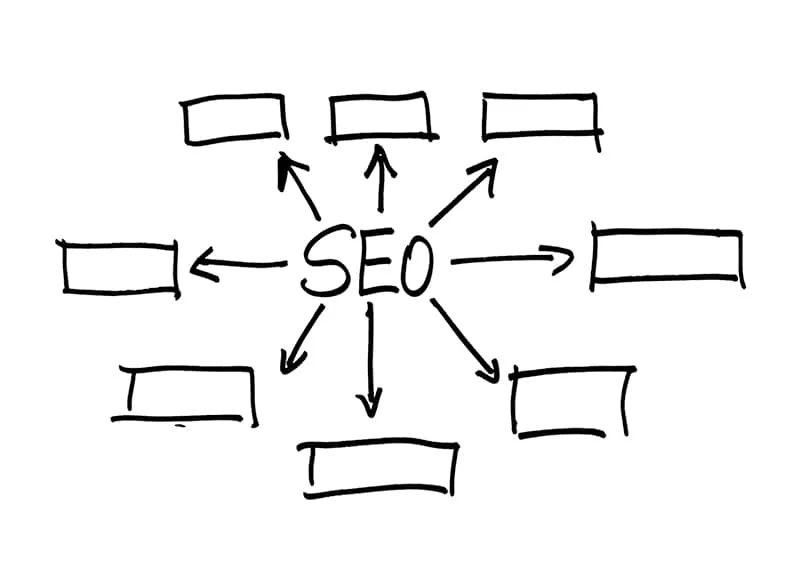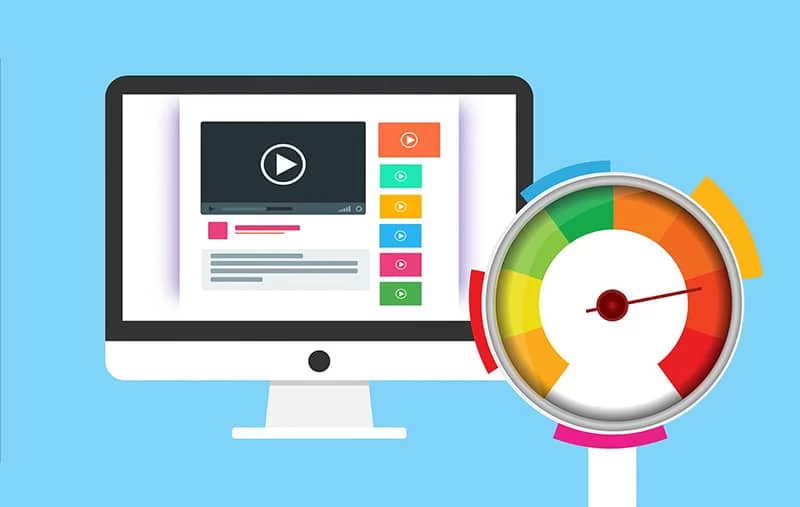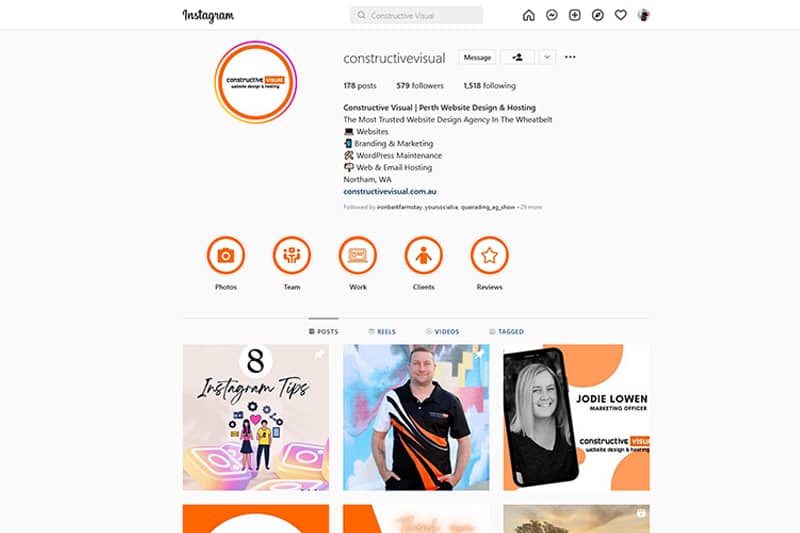In an era where digital presence is imperative, having a responsive website is no longer optional—it’s essential. At Constructive Visual,...

Launching an E-commerce website can be a daunting task. There are so many things to do and it can be hard to know where to start. That’s why we’ve put together this handy guide, which will walk you through everything you need to do after launching your E-commerce website. Follow these 12 steps, and you’ll be on your way to success!
When it comes to launching a successful E-commerce website a quality website launch checklist is key to making sure you hit the ground running. After your E-commerce website is live, it’s time to start thinking about marketing. You’ll need to drive traffic to your site and convert those visitors into paying customers. There are a number of ways to do this, and we’ll touch on the most important here.

Launching a new website can be an exciting time for any business. However, before you hit the publish button, it’s important to check for any spelling mistakes or grammar errors. Even a small mistake can reflect poorly on your company and discourage potential customers from doing business with you.
To avoid any embarrassing mishaps, take the time to proofread your website content carefully. If possible, have someone else look it over as well, to catch any errors that you may have missed. With a little extra effort, you can ensure that your website launch goes off without a hitch.
If spelling and proofreading aren’t your strong suit you can always hire a professional editor or copywriter to help you out. Upwork or Fiverr are both great and affordable ways to do this.
The last thing you want is to miss out on a sale just because you spelt something wrong. It’s important to mention that it’s a good idea to revise any content on your website regularly. This way, you can ensure that any new information is accurate and up-to-date.
When it comes to grammar, a website checker like Grammarly can be a helpful tool. It’s a free online service that will scan your website for any grammatical errors. Simply copy and paste your website content into the Grammarly editor and it will do the rest.

Launching a website is a big undertaking, and there’s a lot to think about. One important aspect of any launch is social engagement – making sure that your site is promoted and visible on social media. To make sure you don’t forget anything, here’s a checklist of things to do.
First, create social media accounts for your website on the major platforms (Facebook, Twitter, Instagram, etc). If you already have personal accounts on these platforms, you can use them to promote your website as well.
Once your accounts are set up, start populating them with content. This can include blog posts, photos, infographics, videos, or anything else that will interest your target audience.
In the weeks leading up to your launch, ramp up your social media activity. This will help to generate interest and excitement for your website. On launch day, make sure to post updates across all of your social media channels. This will let people know that your website is live and ready for them to explore.
Make sure to have links attached to all of your social media posts that lead back to your website. This will help to increase traffic and get people interested in what you have to offer. Many people make the mistake when launching a website of forgetting to promote it on social media. However, with a little effort, you can make sure that your website launch is a success.
Remember consistency is key, when first starting out it’s important to keep testing what content goes down well with your target audience. Doing competitor research is also critical to a successful e-commerce website launch. This doesn’t mean copying your competitor but taking inspiration and understanding what sort of content, voice and style works for them and then adapting this for your own e-commerce website.

In addition to design and content, you also need to make sure that your site is secure. One way to do this is to have a paid SSL Certificate. SSL, or Secure Sockets Layer, is a protocol that provides encryption and authentication for communications over the internet.
This means that your website will be able to protect sensitive information, like credit card numbers and passwords, from being intercepted by third parties. In addition, an SSL Certificate will also help to build trust with your users.
If your website doesn’t have a secure SSL then a warning will appear in the browser which tells users that your website is not secure. This warning can deter people from using your site, as they may not trust that their information will be safe. This will result in your bounce rate skyrocketing and will consequently lower your ranking/organic traffic
So, to avoid this, make sure to get a paid SSL Certificate for your website before you launch. You can easily purchase one from a trusted provider, like Constructive Visual. The cost can range from $69-$220, depending on the level of security you need.

A website launch checklist is a valuable tool for any business owner or website manager. It helps to ensure that all the necessary tasks are completed before the website goes live. Arguably on-page SEO is one of the most important aspects of a website launch. On-page SEO refers to the process of optimizing website content and structure for search engines. By doing this, you can help your website rank higher in search engine results pages, which will increase traffic and visibility.
Now there are a number of factors to consider when optimizing your website for search engines, but some of the most important include keyword research, metadata optimization, and content optimization. By taking the time to properly optimize your website before launch, you can help ensure a successful online debut. Below is a list of important On-page SEO steps you need to talk:
Title tags – The title tag of a web page is meant to be an accurate and concise description of the page’s content.
Meta descriptions – A meta description is a short description of the contents of a web page.
Headings – Headings are used to structure the content on a web page and break it up into sections.
Image alt text – Alt text is used to describe the contents of an image file.
URL structure – The URL structure of a website should be easy to understand and use.
Content – Content is the most important part of any website, and it needs to be well-written, relevant, and keyword-rich. One tip on inputting content is to make sure your videos and photos are the correct sizes. You can do this by using an online photo or video editing tool like Canva.
Keywords – Probably the most important part of on-page SEO, keywords are the words and phrases that people use to search for information on the internet. The key is to find high volume, low competition keywords to target.
By adding an SEO Plugin, you can take your on-page SEO to the next level. SEO plugins are great for a number of reason, but some of the best benefits include automatic keyword optimization, sitemap creation, and metadata optimization.
Blogs are a great way to improve your website’s SEO. By regularly publishing high-quality, keyword-rich content, you can attract more visitors to your site and improve your chances of ranking higher on search engine results pages.
By partnering with an agency specializing in SEO, you can get the help you need to ensure that your website is properly optimized for search engines.

A slow page load time can frustrate users and cause them to leave your site. Additionally, search engines penalize sites with slow page loads, which can hurt your website’s ranking in search results. There are a few things you can do to improve your website’s page load time, such as optimizing images and using caching.
By taking a few minutes to assess your website’s page load time, you can help ensure a successful website launch. Below are several other fast and easy ways you can assess your website’s page load time:
Google’s PageSpeed Insights tool – This tool will give you a detailed report on how to improve your website’s page load time.
Pingdom – This free online tool will test your website’s page load time and give you a detailed report on what needs to be fixed.
GTmetrix – This free online tool will also test your website’s page load time and give you a detailed report on what needs to be fixed.

A website launch checklist is an essential tool for any business owner or website manager. It helps to ensure that all of the necessary tasks are completed before the website goes live.
One of the most important items on the website launch checklist is to capture emails. This ensures that you will have a way to follow-up with website visitors after they leave your site.
There are a number of different ways to capture email addresses, including sign-up forms and exit-intent pop-ups. Once you have captured the emails, you can then add them to your email marketing list and begin sending follow-up communications. By using a website launch checklist, you can be sure that you haven’t forgotten any important steps in the process.
This is crucial to any new business as it’s easier to sell to an existing customer than to gain new ones. Some great ways to improve your sales with your list are to promote specials or sales, offer discounts for referrals, or give away free eBooks or whitepapers.
But most important add value! Businesses owners in 2022 just use their emails lists to send promotional content as they think that’s what their customers want. However, this is not the case. In fact, 78% of consumers say they unsubscribe from emails because they feel like the company is only trying to sell them something.
To ensure that your email subscribers stay engaged, be sure to add value with each email you send. This can be in the form of helpful tips, exclusive content, or anything else that would be of helpful for your target audience. For example, if you run a fitness brand send a daily routine or meal plan. Then automatically every few days send a promotional email for new workout gear. By adding value to your emails, you can increase customer loyalty and improve sales.
Sending follow-up emails is a great way to build relationships with your website visitors and turn them into customers. Simply asking them about their experience or how they found your site can go a long way in building trust and rapport.
The final thing you should remember when sending emails is to include headlines that generate instant curiosity with the receiver. This will ensure that your emails are opened and read, instead of being deleted or sent to the spam folder. Because no matter how good your email content is, if the headline isn’t attention-grabbing, your email will most likely be ignored.

One important task that’s often overlooked is creating your social media presence. This is essential for promoting your website and building an audience. Luckily, it’s not difficult to get started. Here’s a website launch checklist for creating your social media presence:
Pick the platforms you want to be active on. There’s no need to be everywhere, so pick 1 to 2 platforms that make sense for your business and focus on those. Create accounts and fill out your profiles. Make sure to include links back to your website. Start sharing content. This can be a mix of original content and curated content from other sources. The important thing is to start building up a library of content that potential website visitors will find interesting and useful.
Engage with other users. Like and comment on other people’s posts, join in conversations and generally be active on the platform. This will help get your name out there and attract more followers.
Remember to plan to promote only on social media platforms where appropriate for example, LinkedIn should be avoided for more lighthearted content. If you have a young audience, Tiktok and instagram should be your main focus.
If you are just starting out one trick to leverage other peoples followings is to do a collab giveaway. This is simple done by finding someone with a similar target market and giving away one of your products to their followers. Put a list together of people you can do with and start reaching out.

So now you have the website optimised and your content is flowing but you need website visitors! Adding your website URL to as many classified/listing websites as possible, you will encourage more traffic to your site as well as improve your website’s SEO.
There are many ways to promote your website, and the best approach depends on your business and goals. Here are a few ideas to get you started:
Hiring an expert to help with this task is extremely helpful as it will save you time and energy while promoting your website effectively. Partnering with an expert not only saves you time but money in the long run due to the fact that they know exactly what needs to be done to increase traffic to your eCommerce website and have done it many times.
Don’t be scarred to ask for case studies and testimonials when looking for an agency!

As you prepare to launch your website, it’s important to make sure that everything is in order. A website launch checklist can help you stay organized and ensure that you haven’t forgotten anything important. A key item on your website launch checklist should be getting reviews.
Before your website goes live, reach out to a few trusted friends or family members and ask them to take a look. They can provide valuable feedback on the overall design, user experience, and content. Once your website is up and running, make sure to actively encourage customers and clients to leave reviews.
You can include a link to your review page on your website, or send out emails requesting feedback. Reviews can help new visitors feel more confident about working with you, and they can also give you insights into areas where you can improve your website. So don’t forget to add “get reviews” to your website launch checklist!
In return for reviews, you can offer not only a discount but exclusive perks. By making your customers feel special they are more likely to leave a review and continue shopping with you.
Registering on review websites is also a great way to get exposure for your website. Be careful to only register on reputable sites, and make sure to actively manage your reviews. Responding to both positive and negative reviews shows that you’re paying attention and that you care about your customers’ experiences.
Once you have your reviews don’t forget to shout about them. Rather than having them sit idle on your website or review website, make use of them elsewhere. Add testimonials to your social media platforms and use TrustPilot or Google badges on your eCommerce website.

Another important task that should be on your website launch checklist is to build a referral system. A referral system is a way of getting website visitors to refer other potential visitors to your site. There are a number of ways to do this, but one of the most effective is to offer incentives for referrals.
For example, you could offer a discount or free shipping for every person who is referred to your site. You could also offer a contest with prizes for the most referrals. Building a referral system is a great way to generate traffic and promote your website launch.
Most people make the mistake when starting a referral program is not making it attractive enough for users. In order for your referral system to be successful, you need to offer incentives that are valuable to your target audience.
This can be done with micro influencers; it can be incredibly powerful. This builds your community and allows you to make sales at the same time. You can do this by building a list of 100 people with 10-25k followers and offer then a free product and referral code. This will give you a much higher conversion rate as users will trust people that they follow and see as an authority.
You can use an app like Heyo to run social media contests and giveaways. This is a great way to generate interest in your website launch and get people talking about your brand.

Marketing to your network is one of the most important steps to take when launching an eCommerce website. When you market to your network, you are reaching out to people who already know, like, and trust you. This gives you a head start on building relationships with potential customers. It’s your friends or family, your co-workers or classmates, make sure to let them know about your website launch. You can also post on your own personal social media pages and add then to your business page. This is an easy way to get your first few hundred followers
There are a number of ways to market to your network. You can reach out through email, social media, or even in person. The important thing is to be clear about your message and what you are offering. You want to make it easy for people to understand what you are selling and why they should buy from you.
When marketing to your network, it’s also important to be respectful of people’s time and attention. So, it is best to keep your messages short and to the point.
Remember to also share your site to your local business network or Chamber of Commerce, you never know who may be at the meetings… maybe your next investor of a manufacturer that can secure you lower costs.

Paid advertising is a beautiful thing if you know what you’re doing. You can literally turn on a paid campaign and get sales today. But, if you’re new to eCommerce or website launching, then paid advertising is simply the fastest way to get in front of your target market and create sales.
There are a number of different paid options available, but the most effective are:
Google Shopping Ads – These are ads that appear in the Google search results when people are looking for products to buy. They are a great way to get your products in front of potential customers who are already interested in what you are selling.
Social Media Marketing – This is a form of advertising that allows you to target specific demographics with your ads. For example, you can target people by their age, location, interests, and more. It’s important to know your target audience before you start running social media ads.
Influencer Marketing (Product Reviews) – This is a form of marketing where you reach out to influencers with a large following and ask them to review your product. This can be done through social media, blogs, or even YouTube videos. Upfluencer.com is a great site for finding influencers to work with.

Google Analytics is a free tool that lets you track your website’s traffic and performance. It’s essential for understanding how visitors interact with your site, and it can help you identify areas for improvement. The setup process is fairly straightforward: create a Google Analytics account, add the tracking code to your site, and start collecting data.
Pixels are another key ingredient in website launches. A pixel is a piece of code that allows you to track conversions – that is, the number of people who take a desired action on your site (such as making a purchase). Pixels are typically placed on thank-you pages or order confirmation pages. By setting up both Google Analytics and pixels before launching your site, you’ll be able to gather valuable data from day one.

If you’re not already doing so, one of the best things you can do for your e-commerce website is to be consistent with your marketing.
Being consistent means posting new content on a regular basis, whether it’s once a day, once a week, or even once a month. The important thing is to keep the momentum going and keep your business top of mind with your clients.
There are many benefits to being consistent with your marketing, including:
In today’s competitive e-commerce landscape, consistency is key to standing out from the crowd and the only way to stand out in a space where you need to outcompete your competition.
If you’re not consistent with your marketing, you’re likely to see a decline in leads, customers, and sales. So if you want to keep your e-commerce business growing, make sure to be consistent with your marketing!
There’s no doubt that organic marketing is the most effective way to reach your target audience. But what if you’re just starting out and don’t have the budget for paid ads?
Luckily, there are plenty of free organic marketing options available. From leveraging social media to writing guest blog posts, there are a number of ways to get your name and your message out there without spending a dime.
To begin with use free marketing strategies to test your message, find your tone, test your audience and find what content resonates with your network.
Here are some of the best free organic marketing options available:
1. Leverage Social Media
Social media is one of the most powerful tools at your disposal for organic marketing. Use platforms like Facebook, Twitter, and Instagram to reach out to potential customers and followers. Share interesting content, run contests and giveaways, and post consistently to build your audience.
2. Blog Post
Create valuable content if you want people to visit your website and stick around, you need to give them a reason to. Creating compelling, original content is a great way to organically attract attention and build an audience.
Write on topics that you can help your audience with to entice and encourage them to become loyal customers. If you show that you’re an expert in your field, they’ll be more likely to trust you and do business with you.
3. Guest Blog Posts
You can leverage other people’s audiences by reaching out to the owners of websites within your niche and request if you can do a guest blog on their site.
Guest blog posts are a great way to build relationships with other influencers in your industry as well, which can lead to organic opportunities down the road.
You can also repurpose your blog content into social media posts or create original content specifically for social media. Just make sure that whichever route you choose, your ultimate goal is still to provide value and help your audience solve their problems.
By following these organic marketing tips, you’ll be well on your way to building a successful online business!
If you don’t have the time to create content for your business, outsourcing is a great option. You can hire a social media manager or freelance copywriter to handle this for you. This way, you can focus on running your business and leave the content creation to someone else.
Outsourcing content can save you time and money, while also ensuring that your content is of high quality. There is a learning curve when it comes to creating quality social media and website content. A professional generally has the experience and knowledge to get the job done quickly and efficiently.
If you’re not sure where to start, consider hiring a social media manager or freelance copywriter. They can help you create content that is both informative and engaging. Outsourcing content can help you focus on running your business, while someone else takes care of the content creation. This is a win-win situation for both you and your business.
When choosing to outsource, be sure to select a reputable company or freelancer who will produce quality work that meets your standards. You can search for a local copywriter or marketing agency in your area or search online for an agency that can provide these services for you.

Launching an e-commerce website is no small task. But if you take the time to plan and execute each step correctly, you’ll be on your way to a successful launch. By following our tips for launching an e-commerce website, you can minimize stress and maximize success.
Loved this article? Please consider sharing it with your friends…

Peter Lowen
Senior Web Developer | CEO
Peter Lowen is the founder and CEO of Constructive Visual, a website design and hosting company. He has been creating websites since 2005 and writes content on business, marketing, web design, sales training, web hosting and WordPress related topics.
Responsive Web Design – Best Practices for a Responsive Website
In an era where digital presence is imperative, having a responsive website is no longer optional—it’s essential. At Constructive Visual,...
Strengthen your Perth & Wheatbelt business’s online presence with tailored website design and hosting, raising visibility, enhancing user experience, and...
Branding is essential for any business, big or small. It helps to create a unique identity and sets you apart...
Creating a Strong Online Foundation – Small Business Web Design in Perth
In today’s digital age, having a well-designed website is crucial for small businesses in Perth. A professionally designed website can...

We are an SEO & web design agency located in Northam, Western Australia.
Address: PO Box 985,
Northam WA 6401
Location: Perth, Western Australia
Phone: (08) 6118 9186
Email: Contact Us
Services
Information




